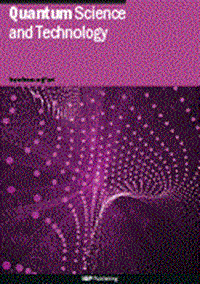将量子算法集成到经典框架中:使用HHL的预测校正方法
IF 5.6
2区 物理与天体物理
Q1 PHYSICS, MULTIDISCIPLINARY
引用次数: 0
摘要
量子算法在经典问题中的应用通常伴随着在量子态和经典态之间传输数据的显著瓶颈,通常会否定任何固有的量子优势。在这里,我们通过将其调整为预测校正器而不是直接求解器,解决了线性方程组的著名算法的这一挑战,该算法最初由Harrow, Hassidim和Lloyd (HHL)提出。现在的目标不再是在下一个时间步骤中寻求解决方案,而是确定时间步骤之间的变化。这种策略可以智能地省略在许多经典算法中常见的计算代价高昂的步骤,同时减轻与从量子态提取解相关的臭名昭着的读出问题。随机或定期执行的跳过反而会导致模拟失败。我们证明,我们的方法确保了一个有用的多项式优势比传统的应用HHL算法。该方法的实用性和多功能性通过在各个领域的应用来说明,例如光滑粒子流体动力学,等离子体模拟和反应流配置。此外,该算法非常适合在未来异构硬件基础设施上异步运行,并且可以有效地利用经典计算资源和量子计算资源的协同优势。本文章由计算机程序翻译,如有差异,请以英文原文为准。
Integrating quantum algorithms into classical frameworks: a predictor–corrector approach using HHL
The application of quantum algorithms to classical problems is generally accompanied by significant bottlenecks when transferring data between quantum and classical states, often negating any intrinsic quantum advantage. Here we address this challenge for a well-known algorithm for linear systems of equations, originally proposed by Harrow, Hassidim and Lloyd (HHL), by adapting it into a predictor–corrector instead of a direct solver. Rather than seeking the solution at the next time step, the goal now becomes determining the change between time steps. This strategy enables the intelligent omission of computationally costly steps commonly found in many classical algorithms, while simultaneously mitigating the notorious readout problems associated with extracting solutions from a quantum state. Random or regularly performed skips instead lead to simulation failure. We demonstrate that our methodology secures a useful polynomial advantage over a conventional application of the HHL algorithm. The practicality and versatility of the approach are illustrated through applications in various fields such as smoothed particle hydrodynamics, plasma simulations, and reactive flow configurations. Moreover, the proposed algorithm is well suited to run asynchronously on future heterogeneous hardware infrastructures and can effectively leverage the synergistic strengths of classical as well as quantum compute resources.
求助全文
通过发布文献求助,成功后即可免费获取论文全文。
去求助
来源期刊

Quantum Science and Technology
Materials Science-Materials Science (miscellaneous)
CiteScore
11.20
自引率
3.00%
发文量
133
期刊介绍:
Driven by advances in technology and experimental capability, the last decade has seen the emergence of quantum technology: a new praxis for controlling the quantum world. It is now possible to engineer complex, multi-component systems that merge the once distinct fields of quantum optics and condensed matter physics.
Quantum Science and Technology is a new multidisciplinary, electronic-only journal, devoted to publishing research of the highest quality and impact covering theoretical and experimental advances in the fundamental science and application of all quantum-enabled technologies.
 求助内容:
求助内容: 应助结果提醒方式:
应助结果提醒方式:


